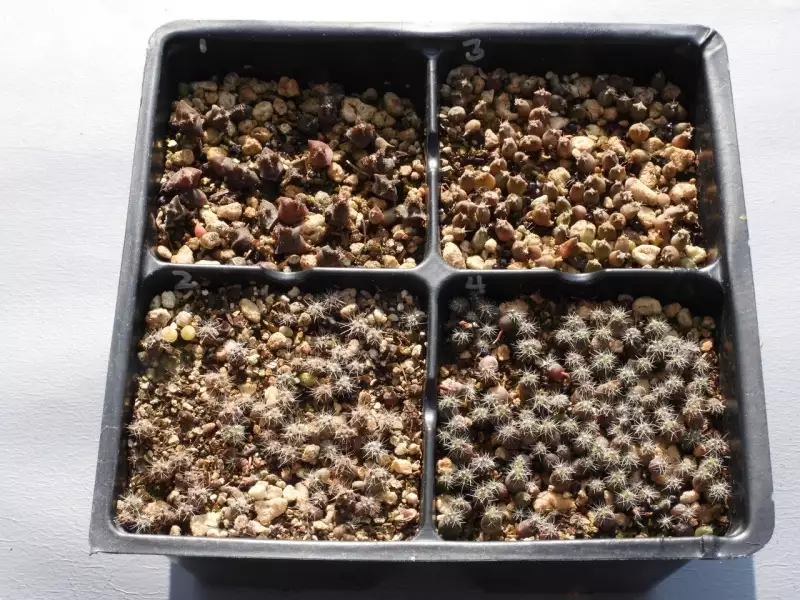
|
August 6, 2020 sowing Set 2
Peniocereus greggii SNL1 (50) max germination count = 27 Count Sept 19 = 29 Astrophytum capricorne (100) max germination count = 88 Count Sept 19 = 88
Echinocereus triglochidiatus (150) max germination count = 49 Count Sept 19 = 101 Escobaria missouriensis SNL155 (150) max germination count = 101 Count Sept 19 = 87
Two weeks later. Note that Echinocereus triglochidiatus seems to have a long germination period. That is, there were 49 plants after about a week to ten days, but there are 101 on September 19, about 33 days later. It happens that I've never grown Echinocereus triglochidiatus and Escobaria missouriensis next to each other before this exercise. I was so surprised at how much alike the two species looked that I thought I had gotten the wrong seeds for one of these cells. But they check out to be as labeled. It actually is not too much of a surprise that baby cacti look alike. As I said before, there is no reason for heavy competition in the seedling phase of their growth. A better reason, or an additional reason, is that the whole notion of taxonomy is that you can trace a group of different species back to a common ancestor. You've got evidence for this notion in this exercise. You will have noticed that even in these last two weeks, much spine growth has happened to the two species under discussion. Just like ordinary plants which have leaves that start appearing shortly after germination, cacti also have their leaves - modified as spines - that grow very soon after germination. Incidentally, spines are not "thorns." Technically, thorns are modified shoots.